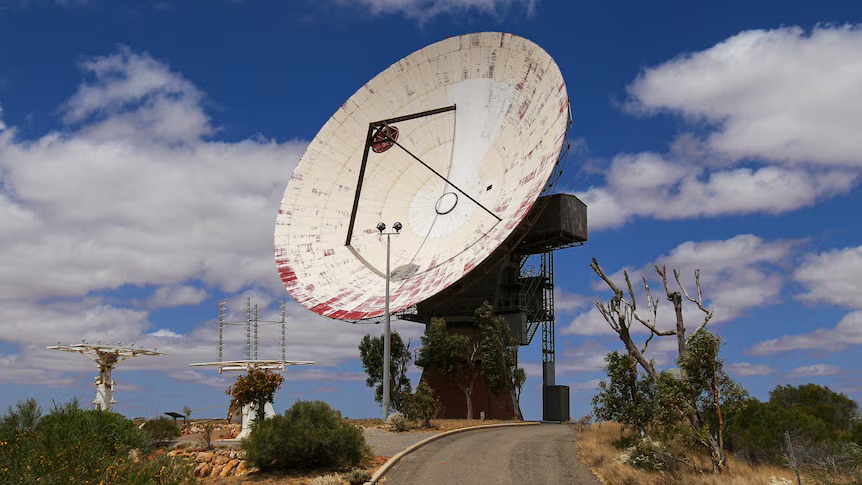The jagged peaks and valleys of a line chart might not look like much, but they represent a comeback years in the making.
Carnarvon’s historic Overseas Telecommunication Commission (OTC) dish had sat dormant for almost four decades.
The structure, nearly 900 kilometres north of Perth, was decommissioned after a decorated history that included aiding NASA lunar missions.
It was destined for demolition before Canadian aerospace company ThothX signed a 20-year lease for the facility in 2022, with minor repairs beginning last year.
This week, the 29-metre-wide parabolic antenna received its first radar signal since 1987.
“I flew 18,000 kilometres from Canada to conduct this test and so, you can imagine, I was delighted when we managed to receive the first signals from [the satellite],” ThothX chief executive Brendan Quine said.
“This gives us a proof-of-concept for the project, and allows us to move forward to the next step, which is to finish the refurbishment.”
Like a giant caravan
The dish needed to be aimed precisely at a satellite of interest in order to receive the signal.
However, it had only been rotated a handful of times since the late 1980s and rarely beyond the range of motion needed to be stowed for the cyclone season.
Along with a new back-end radio system, the dish’s bearings required flushing with fresh oil and decades-worth of pigeon droppings removed, the latter of which was an ongoing battle.
The antenna’s optics, a six-metre-deep tube at its centre, were also cleaned by hand.
Despite the comprehensive works and lofty goal, the latest test came down to three men and a hand-operated drill fitted to the rotator mechanism.
ThothX Australia director Phil Youd compared the manual operation to fine-tuning the dish atop a caravan.
“Some have got their satellite dishes … it’s the same principle as that to find a satellite except it’s far more accurate with what we’ve got,” he said.
“It is a pinpoint that we are looking for; whereas in a caravan, they’re looking for a broad beam coming down from the satellite, we are looking at one little frequency.”
After several minute adjustments, the OTC dish managed to lock on the position of geo-stationary object NSS-12.
The United States-built satellite provides a wide range of services to Australia, such as television broadcasting, online banking transactions, emergency beacons, and military communications.
‘Adversaries’ above
With its proof-of-concept secured, ThothX plans to invest upwards of $10 million into the OTC dish, which it says will take a key place in its global satellite tracking network.
The dish’s location in remote Western Australia, discovered by Mr Quine while searching Google Earth, is particularly well-positioned to give potential military clients a strategic advantage.
“Our adversaries are very active in space,” he said.
“Carnarvon is in a perfect location to monitor these activities because we can monitor the whole Pacific theatre.”
He said an active radar would surpass the usefulness of telescopes used to monitor satellites, which could be affected by the weather.
“If you’re waiting for your adversary to move a spacecraft, you kind of want to know immediately what’s going on, and you want to be able to protect your own assets from things crashing into it,” he said.
More work to be done
The state government contributed $50,000 towards the OTC dish’s refurbishment in September as part of a regional development grant.
ThothX said those funds would go towards repainting the antenna and installing new power systems.
A fresh outer coating to help the dish withstand Carnarvon’s corrosive ocean winds is next on the agenda, with hopes for a full radar demonstration in the next year.
Ultimately, the company expects to install more equipment and software that will allow the OTC dish to locate spacecraft up to 50,000 kilometres from Earth at an approximate three-metre margin of error.
The space company compared the project to its refurbishment of the 46-metre-dish at Algonquin Radio Observatory in Canada, one of several it operates across North America, Europe, and Australia.
It took about 15 years for the Algonquin dish to become fully operational.
Mr Youd, who also manages the Carnarvon Space and Technology Museum, said he was glad to help restore the local landmark.
Source: ABC News WA

Great news story. Australia. just likes to trash important facilities and now we have a forward thinking canadian company who has repurposed the site for the development of space.
Yes it is.